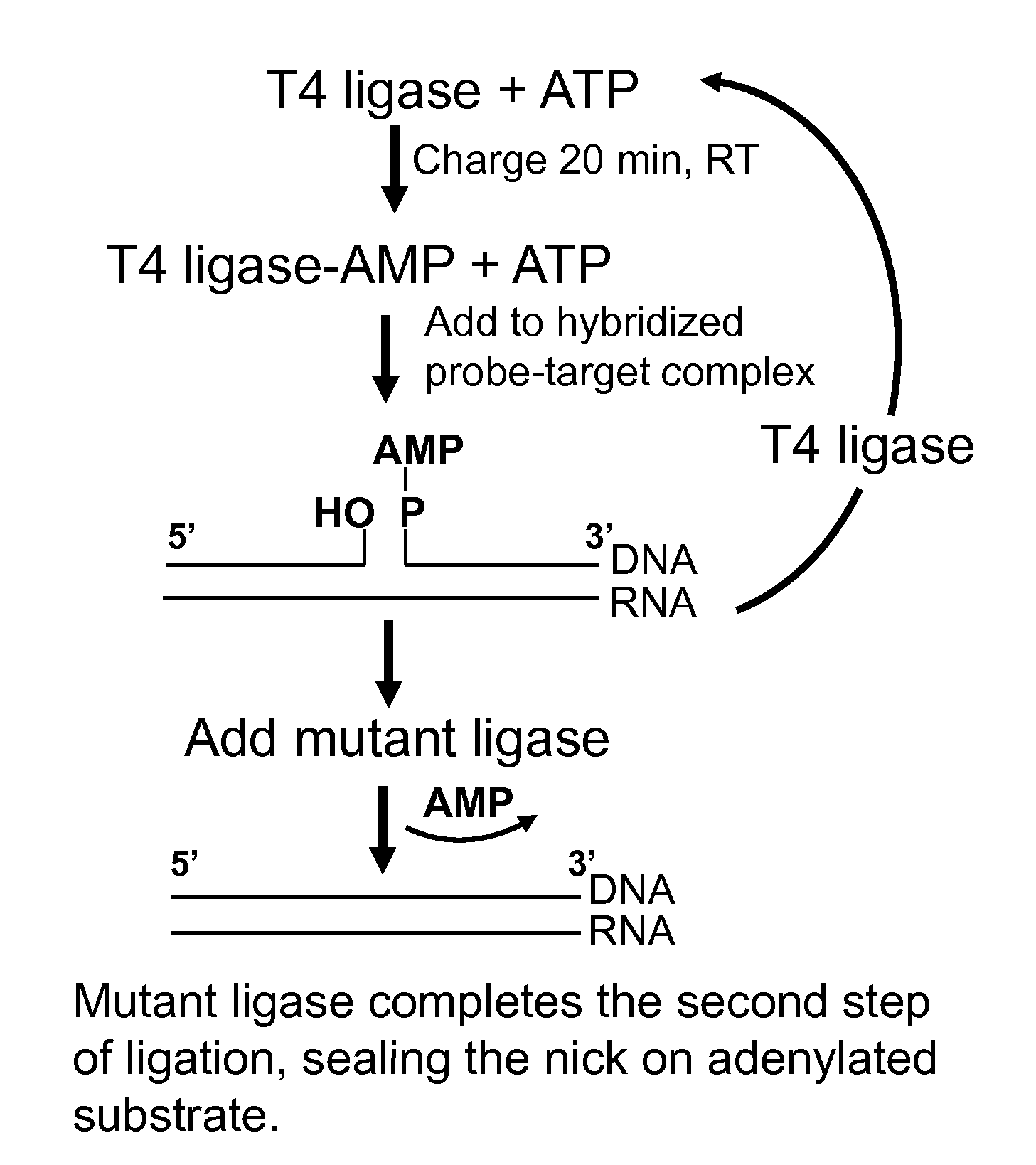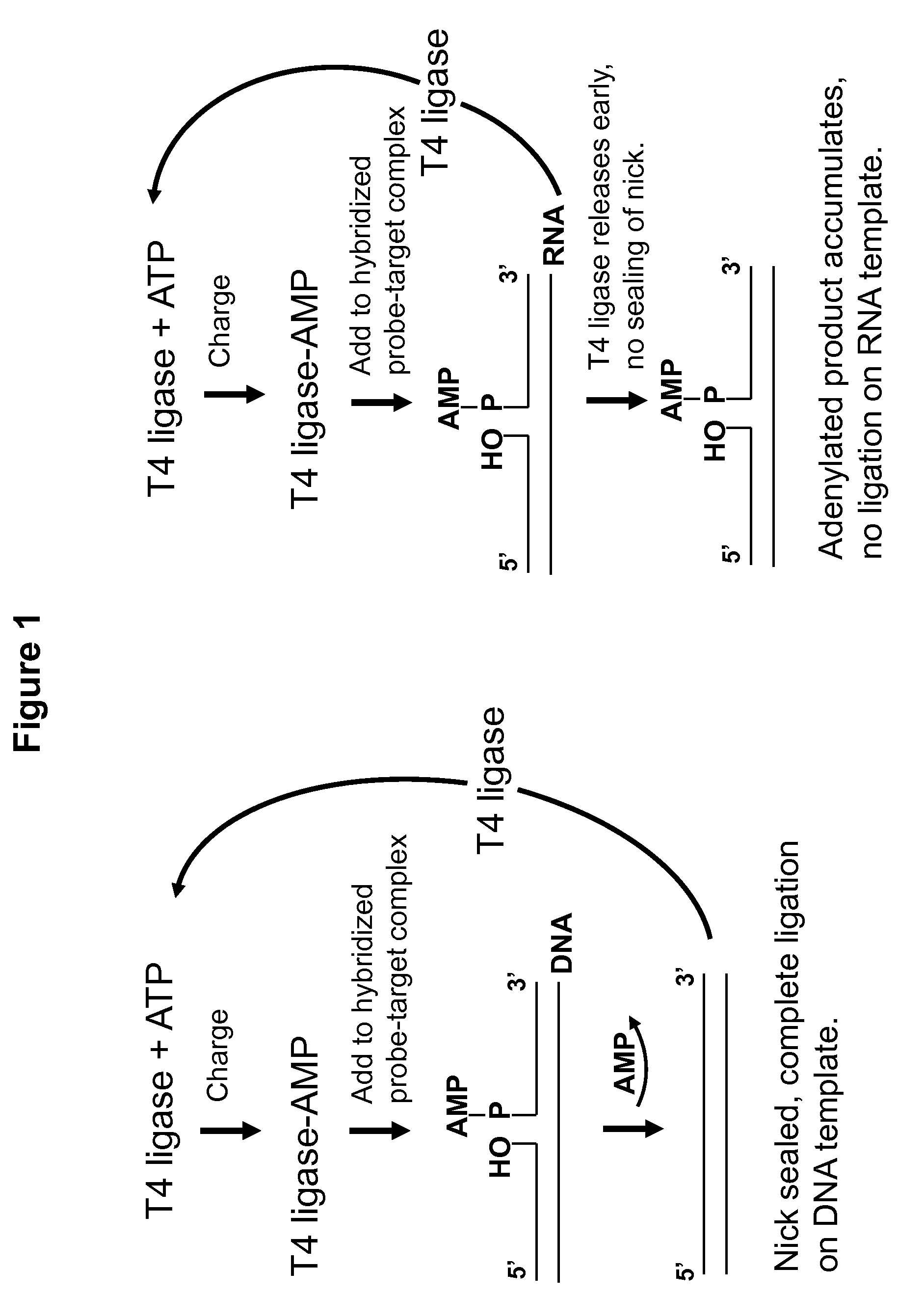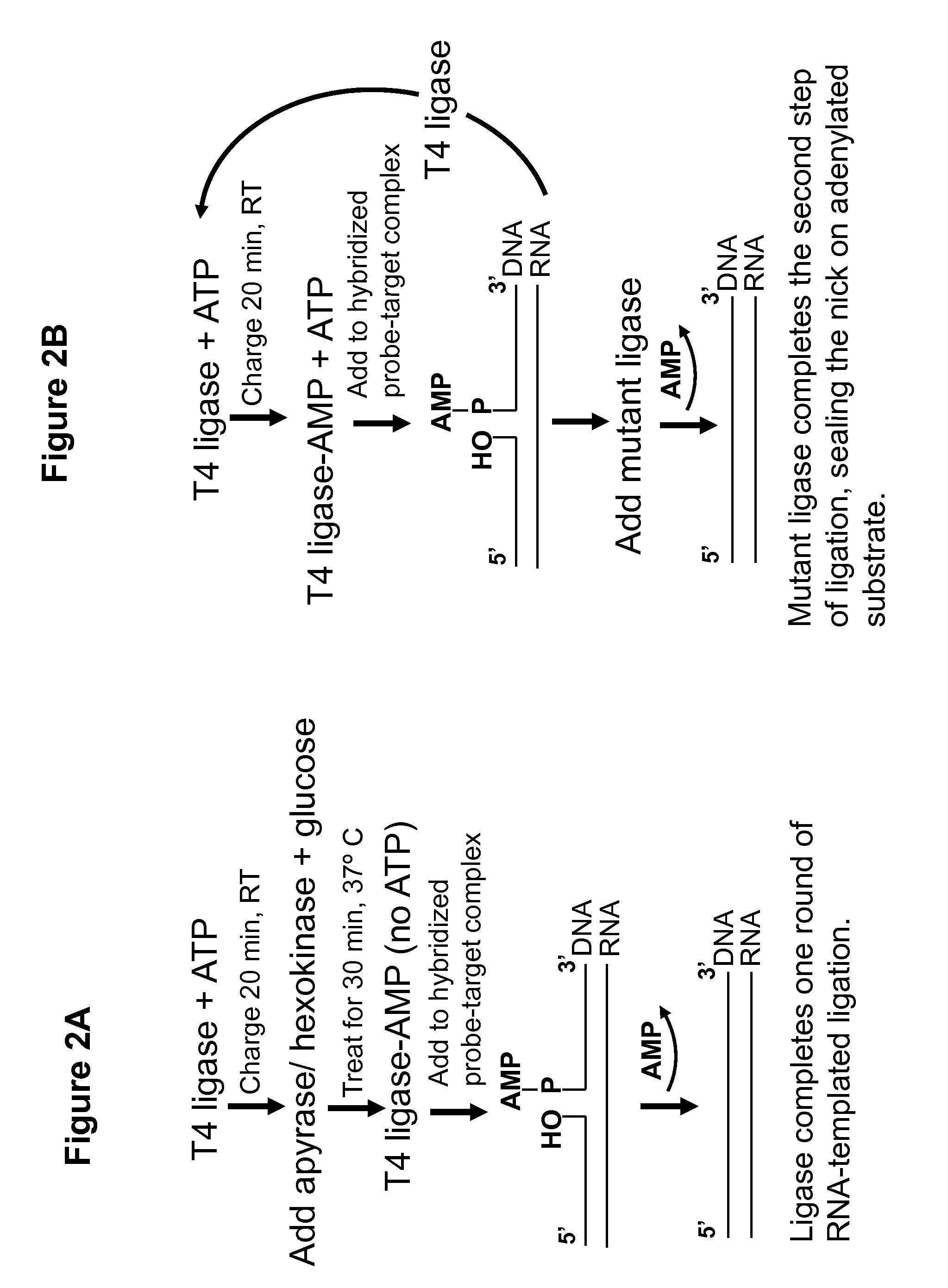DNA ligation on RNA template
a ligation and template technology, applied in the field of ligationmediated nucleic acid detection and analysis, to achieve the effect of high energy
- Summary
- Abstract
- Description
- Claims
- Application Information
AI Technical Summary
Benefits of technology
Problems solved by technology
Method used
Image
Examples
example 1
RNA-Templated Ligation Using Hexokinase Treatment to Eliminate Free ATP
[0067]Experimental design involves use of a padlock-type assay where linearized DNA is annealed at two positions onto a linearized RNA template. Padlock probe assays, design and methodologies are disclosed in, for instance, U.S. Pat. Nos. 5,871,921, 6,235,472, 5,866,337, and Japanese patent JP 4-262799, the disclosures of which are incorporated herein by reference in their entirety. Thus, when DNA polymerase is added, and the assay is successful, the enzyme ligates the two ends of the DNA, forming a circularized, single-stranded DNA molecule which may be assayed by gel shift assay or any other means.
[0068]In the present experiment, RNA template was prepared from linearized Tch2, H4 or H5 plasmid DNA by in vitro transcription using Ambion's Megascript kit. The TCH2 gene is an Arabidopsis thaliana gene encoding a calcium ion binding protein. Four padlock probes (probe sequences may be found in Table 1) were designe...
example 2
RNA-Templated Ligation Using Apyrase Treatment to Deplete Free ATP
[0072]The experiment was conducted as described in Example 1, except that the ATP depleting mix consisted of 1 μl of apyrase enzyme (500 mU / μl), 5 μl of 10× reaction buffer, and 34 μl of distilled water instead of hexokinase enzyme. The ATP depleting mix was added to 10 μl of charging mix, as in Example 1, and incubated for 30 minutes at room temperature. The ATP concentration in the charging mix was either 500 μM or 200 μM.
example 3
RNA-Templated Ligation Using a Mixture of at least Two Ligases
[0073]Charging of T4 ligase and ligation steps may be conducted as described in Example 1, using RNA / probe mixes identical to those in Example 1. Following a 1 hour ligation with T4 ligase in the presence of ATP, NAD+-dependent mutant ligase and NAD+ may be added to the ligation reaction. For example, E. coli LigA point mutants Y22A, D32A and D36A, may be generated from wild-type LigA plasmid DNA by site-directed mutagenesis, using Stratagene's QuickChange kit or a similar product. An amino-terminal truncated LigA construct may also be generated using standard PCR and subcloning approaches. One or more different mutants of LigA, as described above, may be utilized in the present example as the “NAD+-dependent mutant ligase.” The ligation products will be resolved and visualized as described in example 1.
PUM
| Property | Measurement | Unit |
|---|---|---|
| temperature | aaaaa | aaaaa |
| temperature | aaaaa | aaaaa |
| pH | aaaaa | aaaaa |
Abstract
Description
Claims
Application Information
 Login to View More
Login to View More - R&D
- Intellectual Property
- Life Sciences
- Materials
- Tech Scout
- Unparalleled Data Quality
- Higher Quality Content
- 60% Fewer Hallucinations
Browse by: Latest US Patents, China's latest patents, Technical Efficacy Thesaurus, Application Domain, Technology Topic, Popular Technical Reports.
© 2025 PatSnap. All rights reserved.Legal|Privacy policy|Modern Slavery Act Transparency Statement|Sitemap|About US| Contact US: help@patsnap.com



